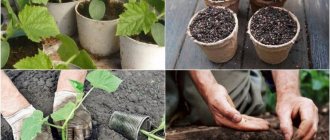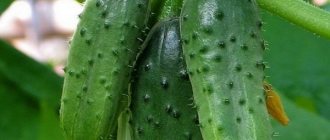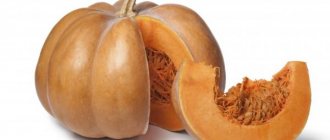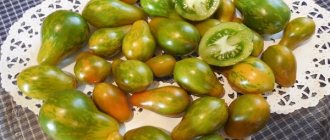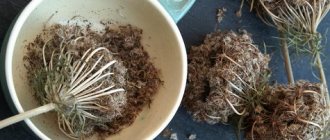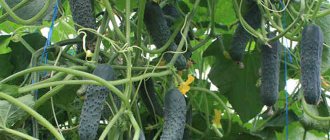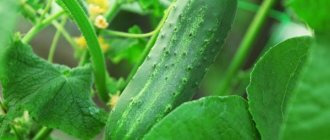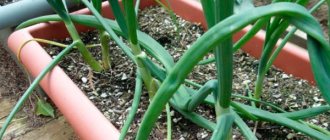Probably every summer resident would like to grow something unusual on his or her plot. Of course, getting a harvest from some exotic southern crop in the conditions of central Russia is quite problematic. However, there are such garden plants, the existence of which domestic summer residents know practically nothing about, that do not require special care and feel good in our cold climate. These include silver melon (or Armenian cucumber).
Description of fruits
The birthplace of this unusual culture is Central Asia. It is believed that no one brought her out on purpose. It was obtained through long-term selection over centuries of cultivation by the peasants of Armenia. Hence its name.
The main feature of the Armenian cucumber is its unusual smell. The pulp of the cylindrical ribbed fruits of this plant is tender, juicy, sweetish, without any hint of bitterness. It doesn't smell like cucumber, but melon. The fruits can reach very large sizes - up to 50 cm. They have a classic long cucumber shape. But they differ in color from the fruits of ordinary varieties. The skin of Armenian cucumbers is light green, slightly silver. It has a small thickness. Therefore, it is not necessary to peel the fruits of this cucumber before eating. When overripe, they turn yellow, lose their smell and taste, and therefore they should be collected on time.
The fruits of the Armenian cucumber are stored very well. You can eat them either fresh or salted or pickled.
Useful properties of the plant
Armenian cucumber has beneficial properties:
- Its use is beneficial for brain function. Armenian cucumber contains the flavonoid fisetin. Scientists have found that it strengthens human memory and intelligence.
- Polyphenols (also called lignins) are an effective preventive agent that prevents the development of ovarian, prostate and breast cancer. It also contains phytonutrients - substances that have an anti-cancer effect.
- The fruits are rich in antioxidants as well as flavonoids. Examples include kaempferol, luteolin, apigenin and vitamin C. These substances provide great benefits to the human body. For example, kaempferol helps reduce the risk of cardiovascular diseases.
- B vitamins contained in fruits help reduce anxiety. They are useful for those who have experienced the destructive effects of stress.
See also
How to make a vertical bed for cucumbers with your own hands and grow them
Read
Biological features
The vines of the Armenian cucumber grow quite long - up to 3 m. Its leaves are dark green, similar in shape to both melon and cucumber. The flowers of the variety are dioecious. Fruits grow on the main vine and on second-order shoots. This variety produces harvests continuously throughout the warm season.
Caring for silver melon is easy. The method of growing it is practically no different from the technology of cultivating any other varieties of cucumbers. The only thing is that since the melon-flavored Armenian cucumber does not like frost and too low temperatures, it is usually grown in greenhouses using the seedling method. Although in the southern regions of Russia it is possible to cultivate this crop using the usual technology - in open ground.
How to plant seedlings
The soil in the pots under this plant should be filled with nutritious and disinfected soil. For example, soil consisting of the following components is suitable for growing Armenian cucumber seedlings:
- garden soil (one bucket);
- humus (3 kg);
- ash (1 tbsp.);
- superphosphate (1 tbsp./l.).
Before planting, Armenian cucumber seeds should be placed in water for 20 minutes. In this way, you can select viable planting material. Seeds without embryos will quickly float to the top, while full ones will remain at the bottom.
Seedlings of this crop are planted in April-May. Place 2-3 seeds in one pot. Subsequently, one of the strongest plants is left. The pots should be placed on the windowsill near the glass. This will provide better lighting. Armenian cucumbers do not like too much humidity. Therefore, when growing seedlings, there is no need to create any greenhouses. The optimal temperature is 23-25 degrees.
Armenian cucumber: growing in a greenhouse
After 2-3 true leaves appear on the plants, you can transfer them to the greenhouse beds. The soil composition for adult plants is the same as for seedlings. The soil should be as loose as possible. This variety tolerates saline soils calmly - the yield does not decrease.
In the greenhouse, you must first install reliable supports for the vines. The beds themselves should have a width of 1 m and a height of at least 25 cm. If desired, Armenian cucumbers can be grown in central Russia and in open ground. In this case, the lashes, as a rule, are simply spread along the ground, as with ordinary cucumbers. But the maximum yield of this “melon” variety can only be obtained when grown in a greenhouse.
When transferring seedlings to a permanent place, you should be as careful as possible. Under no circumstances should the roots of the Armenian cucumber be damaged. Otherwise, the plants will take a long time and take root poorly. Seedlings should be planted together with a ball of earth. To make it easier to remove it from the cup, the plant should be thoroughly filled with warm water a day before transferring. Next, the bottom of the pot is simply cut off and the lump is squeezed out. The first few days after transplantation, young cucumbers should be shaded.
How to fertilize
Armenian cucumbers are fed throughout the season, usually alternating organic and mineral compositions. Plants must be fertilized, especially when grown in a greenhouse. Otherwise, they will significantly reduce productivity. The fruits themselves will grow small, crooked and not too juicy.
The first feeding is usually carried out approximately two weeks after planting in a permanent place. In this case, superphosphate, ammonium nitrate and potassium salt are used (10 grams of each fertilizer for 15 plants).
The second time, Armenian cucumbers are fed after two weeks. In this case, an infusion of mullein with a small amount of chicken droppings or ash is used. You need to water the plants with this mixture carefully, trying not to get it on the leaves and stems.
The next fertilizing can be done while the plants are flowering. This time, a mixture of urea, superphosphate and potassium sulfate (1 teaspoon each) is dissolved in 10 liters of water. You should spend 5 liters of the resulting nutrient mixture per square meter of planting.
During the fruiting period, cucumbers can again be fed with mullein with the addition of ash. Some time after this, it is advisable to spray the leaves of the plant with a solution of urea (1 matchbox per bucket of water).
Resistance to diseases and pests
Armenian cucumbers are resistant to most pests and insects, but in the humid climate of the regions of our country they still have some weaknesses in the manifestation of such lesions as:
- powdery mildew;
- spotting.
The first sign of the disease is a change in leaf color. To avoid further spread of the infection, the plants are destroyed and the surviving parts are treated with chemicals:
- Soon;
- Cumulus and others.
This variety is also not spared by Colorado potato beetles - these annoying neighbors are worth fighting:
- Regent;
- Aktaroy;
- Taboo.
Slugs pay attention to the back side of green leaves, so it’s worth inspecting all the lashes in advance with special care for their presence in order to identify them in time. In the fight against them, such means as solutions of red pepper, ash, and tobacco dust will be useful.
Note!
Another pest of southern evergreen plantings is the mole cricket. This insect prefers the root system of Armenian cucumbers, destroying them completely, gnawing right through the plant.
A good method against it would be to spray with Fofatox and fill the minks with sunflower oil. And a lime solution, Fufanon, is perfect against eternal aphids. As for weather resistance, cucumbers tolerate droughts, cold snaps, and generally sudden temperature changes.
How to water correctly
You need to moisten the soil under Armenian cucumbers quite often - every day (sometimes every other day). In this case, you can only use warm water. If watering is done cold, the plants will definitely get sick. Before the ovary appears, 4 liters of water should be spent on each square meter of planting. After the plants begin to bear fruit, this rate should be doubled. Watering should be done in the morning or evening. The leaves of the Armenian cucumber are very tender. Drops of water falling on them during the day in hot weather can cause severe burns.
Care
Armenian cucumbers need care.
This is systematic digging up of the soil for better air exchange, ventilation of the root system, removal of weeds to additionally free up space for the necessary seedlings, and rare but plentiful watering. Vegetables love fertilized soil and additional nutrients from outside, so fertilizing is indispensable. Organic substances will do. But during the period of active growth of the bush, organic matter should definitely be mixed with a complex of mineral substances. Preference should be given to phosphorus, potassium and nitrogen fertilizers:
- nitrogen is used for the formation of the bush and further fruiting, and high yield;
- potassium and phosphorus - proper weight gain and taste characteristics for Armenian vegetables.
The attached list includes the following types of additives:
- a mixture of equal parts of potassium salt, ammonium nitrate and superphosphate;
- a solution of urea, potassium sulfate and superphosphate (sulfate in a ratio of 1 teaspoon per 1 bucket of water);
- mullein tinctures with the addition of ash;
- additional tincture of mullein with chicken droppings;
- slurry.
Watering is advisable once a day and exclusively with heated water. Cold weather can negatively affect the absorption of moisture by the root system of the plant and affect fruiting. It is necessary to avoid the penetration of water onto the leaves and stems themselves, especially during the daytime. There is a risk of getting burns on the thin peel of cucumbers.
Advice! Before the first ovary appears, you can spend up to 4 liters for every 1 m2. During fruiting, it is advisable to increase the volume of incoming liquid.
Silver melon does not require pinching or tying up lashes and whiskers. It is advisable not to allow the fruits to overripe, otherwise cucumbers that are too large may lose the charm of the tenderness of their thin skin and pulp. They begin to cut the fruits at the growth stage of 20-30 cm. The general collection is carried out at least once a day, more is possible. It is preferable to pick the fruits together with the stalks, this will increase the shelf life.
Typically, cucumbers of this variety do not lose their quality for 30 days. To continue this gap, refrigerators and cool places will also work.
